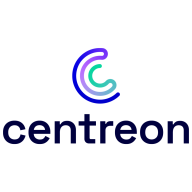

Splunk Observability Cloud and Centreon are leading solutions in the observability and infrastructure monitoring category. Splunk appears to have an edge in comprehensive data integration, whereas Centreon excels in flexibility and cost-effectiveness.
Features: Splunk Observability Cloud includes seamless data integration, efficient log analysis, and customizable dashboards. It manages infrastructure and application monitoring in one tool with real-time alerts and reporting. Centreon offers flexibility in monitoring parameters, easy infrastructure management through a single interface, and comprehensive data visualization, allowing integration with multiple third-party tools.
Room for Improvement: Splunk users need better third-party integration, intuitive navigation, and cost efficiency. They suggest improved training resources and automation features. Centreon users highlight a need for enhanced cloud service monitoring, better release management, and improved data granularity. They also wish for graphical enhancements and simplified reporting features.
Ease of Deployment and Customer Service: Splunk Observability Cloud supports hybrid cloud compatibility but receives mixed reviews on technical support responsiveness. Centreon, typically deployed on-premises, is known for its straightforward setup and effective open-source resources, though occasionally it has delays in detailed assistance.
Pricing and ROI: Splunk Observability Cloud is seen as expensive, with pricing based on data volume, but it's valued for high ROI due to reducing downtime and incident management costs. Centreon is recognized for its cost-effectiveness, especially with its open-source offering. Paid versions are pricier for larger modules but offer significant ROI by providing robust features and better support.


Centreon is an all-in-one IT monitoring solution that is a network, system, applicative supervision, and monitoring tool. It is free and open source, and one of the most flexible and powerful monitoring softwares on the market.
Centreon Features
Centreon has many valuable key features. Some of the most useful ones include:
Centreon Benefits
There are several benefits to implementing Centreon. Some of the biggest advantages the solution offers include:
Reviews from Real Users
Below are some reviews and helpful feedback written by Centreon users.
PeerSpot user Thor M., CEO at a tech services company, says, "The single-pane view provides us a view of all of our network infrastructure, and it is one of the most important tools that we use to see the status of our customers' networks. It provides a nice benefit when it comes to helping align IT operations with business objectives. The top-down views, dashboards, and business context reporting are things that are nice to have because you want to be able to show the customer that everything is working, that problems have been addressed, and that you're providing value.”
Thomas C., Managing Director, Canada at Eva, comments, “The most valuable feature of the solution is the flexibility, the ability to integrate all kinds of equipment. As long as something has an IP you can monitor it. What we try to achieve all the time is not only saying a company's system is available, but to give additional data on the performance of the equipment. So the flexibility is what matters the most to us, where we can script everything. Centreon has a lot of Plugin Packs, meaning they support, by design, a lot of devices. And on top of that, we have the ability to add our own scripts and do whatever we want and display the data as we want in the central dashboards.”
Marcilio L., President at ITS Solucoes, expresses, "The dashboards are valuable because they ease troubleshooting and viewing. It becomes easier to locate the source of a problem... The dashboards make it easier to communicate with our clients. They don't want to see the alert console, they want to see a beautiful dashboard representing their network and their business and to watch it in case something is wrong in their environment."
Florent Q., Network Engineer at a computer software company, mentions, "The most valuable feature is that we can manually configure everything we need. After it comes inside the interface of Centreon, you can display it. Because the interface is quite user-friendly, you can manually configure the configuration very deeply, which is very pleasant and useful because you can monitor and see everything on your service list, dashboard, or MAP. The most useful feature for me is that you can create your own plugin and monitoring query."
Splunk Observability Cloud combines log search, data integration, and dashboards for seamless monitoring, enhancing infrastructure visibility and security. Its cloud integration and scalability support diverse environments, improving operational efficiency.
Splunk Observability Cloud offers comprehensive monitoring tools with user-friendly interfaces, enabling end-to-end infrastructure visibility. Its real-time alerting and predictive capabilities enhance security monitoring, while centralized dashboards provide cross-platform visibility. Users benefit from fast data integration and extensive insights into application performance. Despite its advantages, improvements could be made in integration with other tools, data reliability, scalability, and cost management. Users face challenges in configuration complexity and require better automation and endpoint protection features. Enhancing AI integration, alerts, and adaptation for high-throughput services could further improve usability.
What are the key features of Splunk Observability Cloud?In industries like finance and healthcare, Splunk Observability Cloud is implemented for application performance monitoring and infrastructure metrics. Its ability to track incidents and analyze machine data benefits network infrastructure, while distributed tracing and log analysis aid in tackling security threats. Organizations often integrate it for compliance and auditing purposes, enhancing visibility into network traffic and optimizing performance.
We monitor all IT Infrastructure Monitoring reviews to prevent fraudulent reviews and keep review quality high. We do not post reviews by company employees or direct competitors. We validate each review for authenticity via cross-reference with LinkedIn, and personal follow-up with the reviewer when necessary.